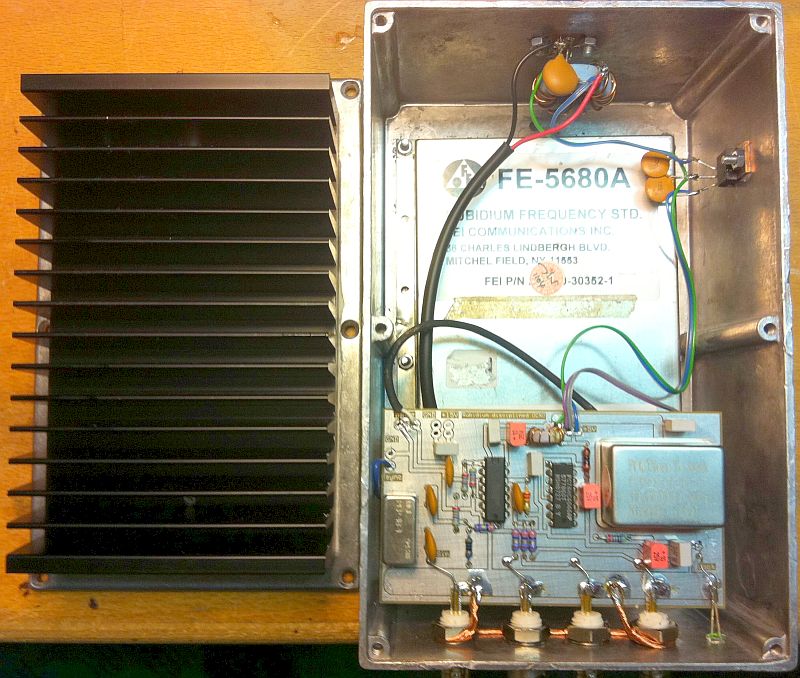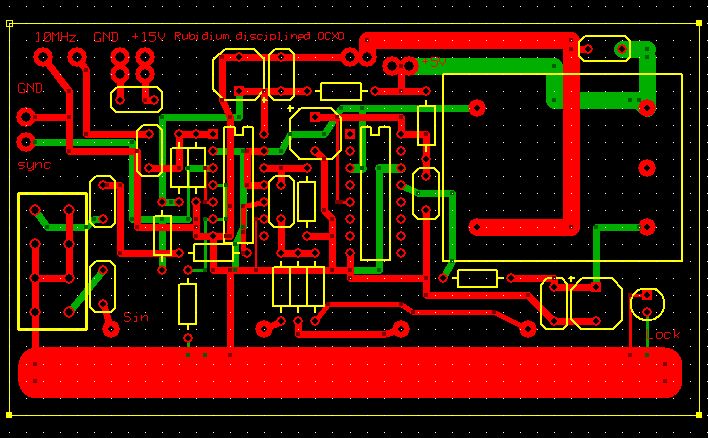
A RUBIDIUM DISCIPLINED 10 MHz OCXO
SM0FLY (SK 01-apr-2021) , July 2011
PRE-SCRIPTUM
This mini project was ‘forced upon me’ as I purchased a PC based spectrum analyser ’Signalhound’. See the website www.signalhound.com for detailed info. As this spectrum analyser is a USB powered device, a stable built-in low noise reference oscillator in the analyzer is not an option with today’s limited power handling on USB PC ports. Hence, an external 10 MHz oscillator reference should provide the necessary absolute frequency accuracy as well as the low sideband noise requirements.
RUBIDIUM AND OCXO FREQUENCY STANDARDS
Numerous devices are available on eBay that satisfy our demand for an accurate 10 MHz reference regarding frequency accuracy.
For a handful USD, the following Rubidium 10 MHz standards were purchased via eBay and flea-markets:
- Efratom FE5680A
- LPRO-101
- AT&T (new, unused spare part)
A well known limitation of Rubidium standards is the relatively high nearby noise and/or spurious at the carrier, expressed in dBc/Hz. This was clearly noticed by measuring the above devices.
A simple ovenized crystal oscillator OCXO has a remarkable lower noise sideband and is therefore preferably implemented in SDR’s or synthesizers in general. The used PTOC32227 from FOQ Piezo Technik, today available as IQOV-70-6, has < -145 dBc/Hz at 1KHz distance from the carrier.
The task is therefore to combine the OCXO low noise specifications with the Rubidium absolute frequency accuracy.
OCXO WITH RUBIDIUM FREQUENCY ACCURACY
The circuit diagram below shows the solution. The OCXO, with a voltage controlled input that allows a few ppm frequency change, is locked via a PLL formed by the phase detector part of a 74HC4046 to the Rubidium standard. Time constant of the PLL to the OCXO is kept at approximately 0.5 seconds at pin 13 of the 74HC4046.

A 74AC04 is used for signal ‘shaping/driving’ and input handling for the PLL 74HC4046. Three (3) outputs with square wave are available for optional use for frequency counters, SDR’s or auxiliary devices that need low noise accurate frequency references.
A Mini-Circuits LP filter PLP-10.7 is embedded in case a pure 10MHz sinus is required for other purposes e.g. long transmission lines.
PRACTICAL BUILD-UP
Image below shows the implementation of the above circuit diagram. The heat sink is removed for this picture only. The OCXO is disciplined by the Efratom FE 5680A. Note that most Rubidium standards need approx 2-3 Amps at 15-24 Volts at start-up and the OCXO between 0.3 and 0.6 Amp at 5 Volt. The whole unit is therefore powered by an external low cost laptop-intended switched PSU. The 5 Volt for the logics and OCXO is accomplished by an internal 7805 circuit built into the box as shown below. A solid heat sink is a must to keep the maximum temperature within the Rubidium/OCXO specified range.


REFERENCES
![]()